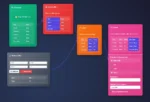Today’s intricate data landscapes demand intelligent approaches to transform raw data into meaningful and actionable insights. As data continues to multiply rapidly, companies find themselves grappling with inefficient traditional methodologies. Enter functional programming—a paradigm that not only simplifies complex data transformations but also fortifies scalability, readability, and optimization. Forward-thinking companies increasingly adopt functional programming to execute robust data transformations that power advanced analytical capabilities—leveraging clarity, maintainability, and precision. Whether you’re leading an innovative startup or piloting digital transformation inside a legacy enterprise, harnessing functional programming paradigms can unlock substantial value from your data workflows.
Understanding Functional Programming in Data Engineering
Functional programming revolves around the concept of treating computation like mathematical functions, emphasizing immutable data structures, pure functions, and declarative approaches. Unlike traditional imperative programming, which typically involves directly manipulating the state, functional paradigms encourage developing data transformation logic through composable functions with predictable outputs and minimal side effects.
This approach is especially beneficial when managing data transformation logic in complex enterprise data environments. By eliminating mutable state, functional programming provides clearer code frameworks that allow faster iteration, easier debugging, and smoother collaboration. Development teams gain the power of concise, declarative expressions that facilitate transparent, collaborative decision-making processes and more effective data engineering strategies.
Companies dealing with extensive datasets or trying to optimize analytics and SEO performance, as discussed in our article on The Overlap between Analytics and SEO Performance, particularly benefit from this paradigm’s rigor. Utilizing functional programming enables teams to write maintainable code for demanding analytical workflows, streamlining complex transformation tasks across large-scale data initiatives.
The Advantages of Pure Functions in Data Processing
Pure functions form the core of functional programming methodologies and deliver substantial improvements in the reliability of data transformations. A pure function has two critical characteristics: it always returns the same output given identical inputs and produces no side effects in the system. Data science teams adopting pure functions ensure their transformation logic is both transparent and predictable, driving confidence among stakeholders and decision-makers alike.
In highly regulated financial or healthcare environments, employing pure functions allows leadership teams to trace transformations step-by-step easily, significantly reducing confusion or potential mistakes downstream. It’s also particularly suitable for teams needing efficient data diagnostics—a valuable capability as outlined in our insights on the different types of data analytics.
By shifting toward pure functions, data engineers and analysts eliminate common engineering pitfalls tied to mutable state, simultaneously making scaling more efficient and seamless while reducing risk. This predictability fosters confidence not just in the programming code itself but also enhances overall strategic planning and analytical initiatives leveraged throughout an organization.
Immutability Enables Agile Data Workflows
An essential tenet of functional programming is immutability—the practice of creating objects and data structures that cannot be altered after they have been initialized. Immutability encourages engineers to design data workflows explicitly and clearly, contributing significantly to agile practices within data engineering teams.
Immutable data structures simplify debugging and reduce errors by maintaining a clear state throughout each transformation stage. For teams managing complex data lakes or warehouses, immutability facilitates smoother product deployments and more agile project management across engineering departments. Conversely, organizations stuck maintaining mutable data states typically face multiple rounds of troubleshooting, dealing with messy databases and inefficient reporting software, as outlined in our analysis of how most companies incorrectly handle their data lake issues.
Incorporating immutable data structures reduces operational risk, allows data engineers to parallelize tasks effectively, and ensures that data lineage remains consistent and trustworthy. As businesses embark on ambitious digital transformation initiatives, embracing immutability in data transformation logic yields enormous strategic advantages.
Higher-Order Functions and Composable Data Transformations
Another powerful aspect of functional programming is higher-order functions—functions capable of taking other functions as arguments or returning them as output. This approach enables engineers to construct sophisticated logic by composing simple, modular, and easily adjustable data transformation functions.
Through composability, functional programming maximizes reusable engineering components, simplifying data transformation involving repeated business logic. For instance, a company optimizing logistics could adopt a composable inventory optimization strategy—something highlighted in our detailed exploration on Efficient Storage Space Utilization and Inventory Optimization methods. This also holds true for other business contexts requiring complex repetitive calculation and analytics tasks, allowing engineering and analytics teams to quickly adapt workflows to changing business requirements.
Higher-order functions streamline complex transformations that might otherwise occupy days of inefficient manual effort—often encountered when businesses rely predominantly on traditional solutions such as Excel. As we emphasized in our article If You Use Excel to Solve a Problem, You’re in a Waterfall Project, adopting appropriate functional paradigms helps organizations sidestep inefficiencies inherent in outdated data transformation workflows.
Functional Approaches for Enhanced Scalability and Performance
Implementing functional programming patterns indirectly improves performance and code efficiency. By prioritizing immutable structures, pure functions, and minimizing side effects, functional programming reduces overhead and provides fewer unforeseen interaction points. This sparks noticeable improvements in scalability and the ability to support large-scale transformation pipelines without compromising speed or responsiveness.
Organizations operating within environments characterized by vast data pipelines—such as enterprises frequently handling large inbound data streams exceeding 10 MB spreadsheets, a limitation we addressed in our article about connecting to large Google Sheets data—particularly benefit from the optimized resource management offered by functional programming. These methodologies often simplify complexity, preserving system resources and reducing latency during data-intensive transformations and analytical workloads.
Additionally, when your business considers scaling data transformation logic across multinational subsidiaries or sizable legacy systems, embracing functional patterns empowers transformation frameworks to accommodate growth effectively. Strategically investing in these robust methodologies ensures your data engineering department can meet growing enterprise data demands smoothly and capably.
Strategically Implementing Functional Programming Approaches
Adopting functional programming patterns in your enterprise involves more than mere technical decisions—it’s part of a broader effort to ensure future scalability, sustainability, and innovative capability across your analytical and data ecosystem. Organizations transitioning toward data-driven decision-making structures need processes, methodologies, and technologies capable of sustainably supporting constant change and evolution in analytics demands and technological advancement.
Partnering with experienced and skilled professionals specializing in data transformation—like our experts at Dev3lop—provides a significant strategic advantage. Our team offers a broad range of data engineering consulting services, ensuring your transformation strategy aligns efficiently with your long-term business goals and enhances your competitive positioning.
Functional programming is an essential skill your organization must embrace to innovate faster, reduce risk, unlock expert-level analytics insights, and maintain superior technical agility. As business leaders face increasingly fierce competition and technological disruptions, strategically embracing functional paradigms becomes mandatory—not just beneficial—for maintaining sustainable growth.
Conclusion: The Road Ahead for Functional Programming and Data Transformation
Cutting-edge enterprises that actively harness functional programming paradigms in their data engineering practices realize long-term benefits in agility, maintainability, transparency, and scalability. Avoiding these modern programming paradigms carries significant risks, leaving strategic decisions hindered by legacy inefficiencies.
Integrating functional programming into your organization’s data transformation workflows ultimately empowers your analytics capabilities to handle complex future challenges more resiliently. Rethinking how your organization builds data tools—from complex inventory optimizations to advanced analytics and SEO optimization—is vital to unlocking new opportunities through innovation and strategic investments.



















